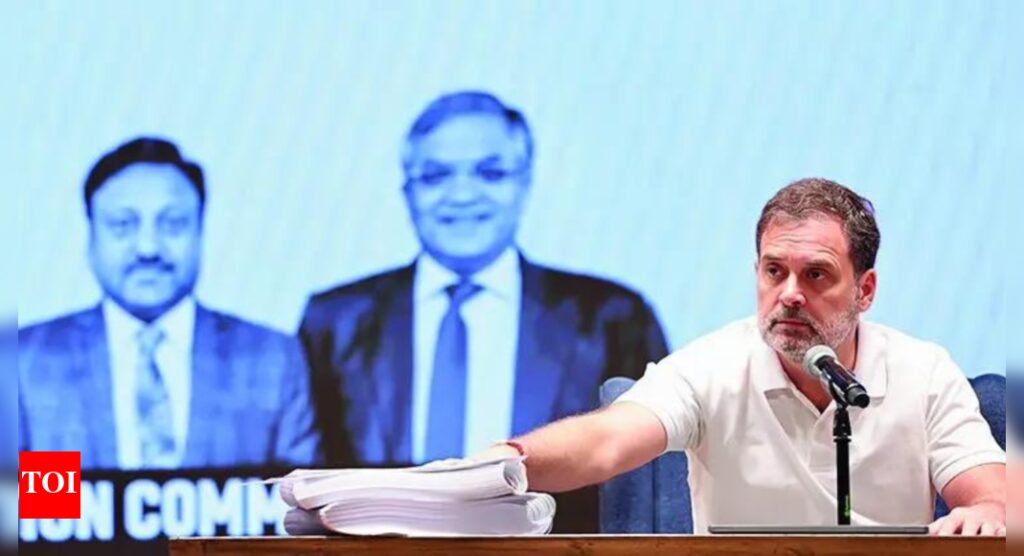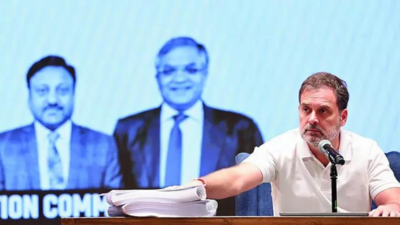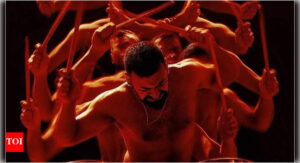‘Public understands the truth’: How Rahul Gandhi ‘manipulated’ EC data to level ‘vote chori’ charge – CEC explains | India News

NEW DELHI: Chief Election Commissioner Gyanesh Kumar on Sunday accused Congress leader Rahul Gandhi of “manipulating” poll body’s data to level charges of “vote chori” against the Commission.In a press conference, the CEC said that the Congress leader, in his presentation, wrongly analysed the EC’s data to claim that the elections were flawed.“When someone goes to cast their vote and presses the button, they can press it only once. Even if a name appears twice in the voter list, how can there be vote theft? A voter can cast their vote only once. That is why we had said that such presentations manipulated EC’s data to claim that just because a name appears in the voter list, the election itself is flawed,” Gyanesh Kumar said.“But the voter list and the act of voting are two separate subjects, and both are viewed differently. They are also governed by different laws. The law for voter lists is the Representation of the People Act, 1950, while the law for casting votes is the Representation of the People Act, 1951. Their rules are different, and the authorities managing them are different,” he added.“If, by mixing up voter lists and voting, baseless allegations are made against the Election Commission—which works with utmost diligence—and people are told that ‘theft’ is happening, the public understands the truth. And if anyone makes such a claim, they need evidence, which has not been found,” Gyanesh Kumar said.This comes days after Rahul Gandhi unveiled what he had described as an “atom bomb” of evidence against the Election Commission.Citing data from the Mahadevapura assembly segment, which falls under the Bengaluru Central parliamentary constituency in Congress-ruled Karnataka, he accused the poll body of “colluding” with the BJP.Gandhi said the Congress had analyzed the Mahadevapura electoral rolls over six months and found that out of 1,00,250 alleged bogus voters, 40,009 had “fake and invalid addresses” and 10,452 were “bulk voters” registered at common addresses. Examples included entries with “0” in the address field, non-existent locations, and addresses that could not be verified.On voters with “0 address” in their voter ID card, the Election Commission said these are individuals without a permanent address, to whom the poll body assigns a “notional number.”“For example, such an issue once came up. Someone said that there are 80,000 people with house number zero, therefore they must be fake. The very next day, many voters came forward and said: ‘No sir, we actually live here,’” Gyanesh Kumar said.“In every panchayat or municipality, it is not necessary that even if you have a house, you will be given a number. There are also many people who do not have a house, but their names are still on the list. Their address is recorded as the place where they sleep at night—sometimes under a bridge, sometimes beside a lamp post. And if such people are then labeled as fake voters, it would be a grave injustice to our poor voters, our brothers, sisters, and elders,” the CEC added.The Election Commission also sought an apology from the Congress leader and said, “An affidavit will have to be given or an apology will have to be made to the country. There is no third option. If the affidavit is not received within 7 days, it means that all these allegations are baseless.”On August 7, Rahul Gandhi accused the EC of colluding with the BJP to “destroy Indian democracy and steal elections,” and argued that if the EC does not provide electronic voter data of 10–15 years and CCTV footage, then it is “partaking in crime,” since these are now “evidence of crime.” He urged the judiciary to intervene to save Indian democracy.Citing the study, Rahul claimed the BJP won Bangalore Central by 32,707 votes while 1,00,250 fake votes were polled in its favor. He said the fake votes fell into five categories: duplicate voters (11,965), fake/invalid addresses (40,009), bulk voters at a single address (10,452), invalid photos of voters (4,132), and “misuse of Form 6” for first-time voters (33,692). Showing files, he cited examples to argue that people had voted multiple times in different booths of the seat, while voter list addresses included “Street 0” and “House no. 0.” He said there were cases where as many as 80 voters were shown at one address, or 50 in a single one-bedroom house, and that attempts to cross-check resulted in either researchers being beaten up or confirmation that the voters did not live there.







